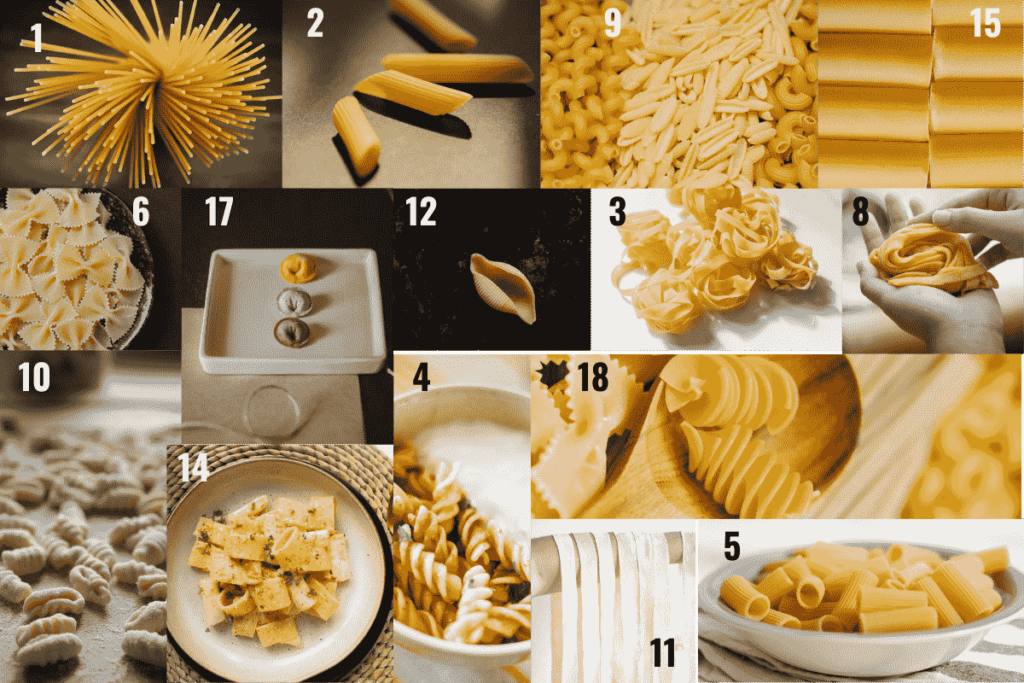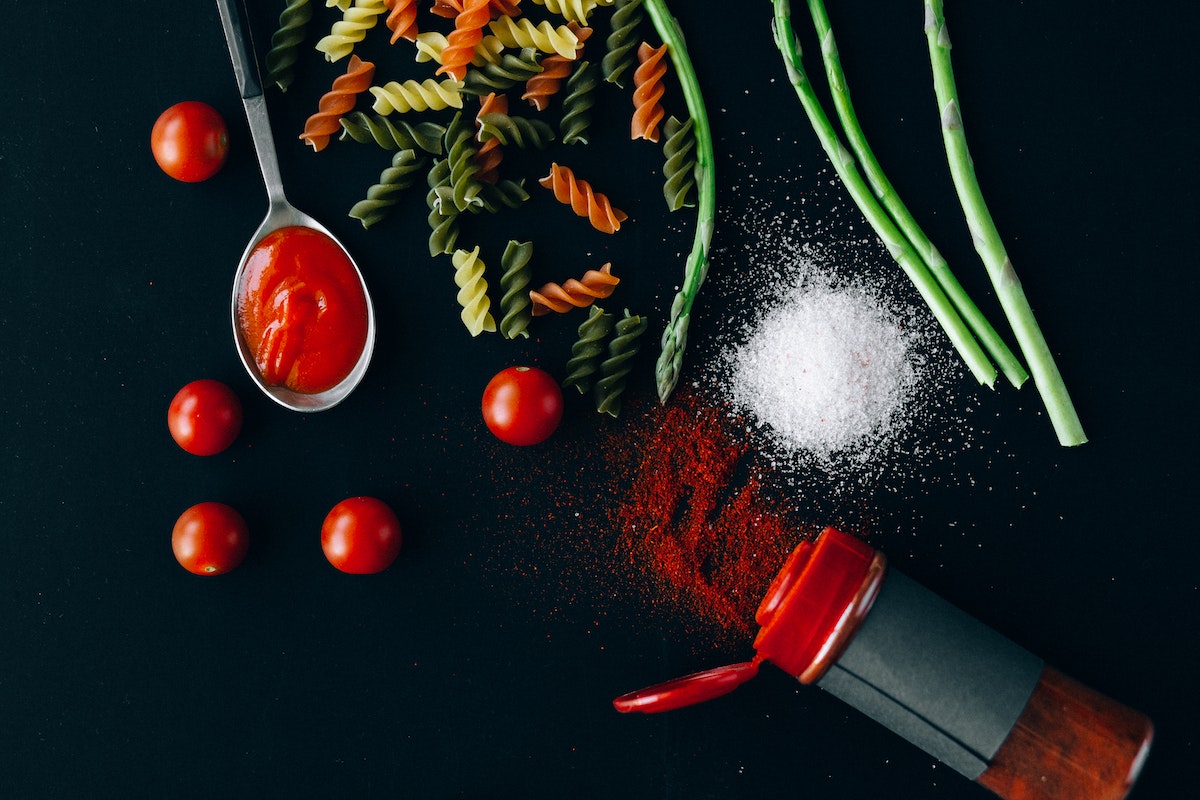Immerse yourself in the exquisite world of Italian culinary mastery by embarking on an enchanting journey to craft your very own homemade bellissima pasta, embracing the very essence of traditional Italian gastronomy. Unveiling the secrets of Bellissima Pasta creation, this remarkable endeavor presents you with an extraordinary opportunity to savor Italy’s most divine flavors, all within the confines of your own kitchen. This comprehensive and enlightening guide serves as your personal passport through the rich tapestry of Italian pasta’s history, encompassing an array of pasta varieties, indispensable ingredients, essential tools, meticulous step-by-step walkthroughs, ingenious serving recommendations, and expert storage counsel. Elevate your culinary prowess as you embrace the artistry of crafting authentic Italian pasta with this indispensable guide by your side.
History of Italian Pasta
Indulge in the timeless delight of pasta, a cherished culinary masterpiece that has captivated palates across the globe. Embarking on a journey that traces back to ancient Italy, Pasta’s narrative is woven with the threads of history, intertwining with the legacy of Etruscan and Roman civilizations. Across the ages, pasta has metamorphosed into an emblem of Italian gastronomy, an edible art that transcends time.
Venturing beyond mere sustenance, pasta’s inception was humble, fashioned from the simplest of ingredients—flour and water. However, it was in the 12th century that pasta’s allure blossomed, as the innovation of dried pasta took center stage and was celebrated for its exceptional longevity. This durability transformed pasta into not just a meal but an enduring tradition.
Today, the panorama of pasta stretches wide, a testament to the diverse tapestry of Italy’s regional culinary craftsmanship. Each pasta variety reflects a rich heritage, capturing the essence of a specific locale. From the robust flavors of the North to the sun-soaked notes of the South, every forkful of pasta encapsulates the essence of Italy itself. Embrace the past and savor the present through the infinite assortment of pasta, where history and taste unite in a symphony of flavors.
Types of Italian Pasta
Italian pasta boasts an array of shapes and sizes, each designed to hold different sauces and flavors. From long and thin spaghetti to intricate shapes like farfalle (butterfly) and orecchiette (little ears), the diversity of pasta styles is staggering. Penne, rigatoni, fusilli, and tagliatelle are just a few examples of the endless possibilities. These variations cater to various sauces, ensuring a delightful dining experience.

- Spaghetti: Long, thin strands of pasta that are a staple in Italian cuisine, often served with various sauces.
- Penne: Short, cylindrical pasta with diagonally cut ends, great for holding sauces in their ridges.
- Fettuccine: Flat, wide ribbons of pasta, often paired with creamy sauces like Alfredo.
- Linguine: Similar to spaghetti, but slightly wider and flatter.
- Rigatoni: Large, ridged pasta tubes, ideal for capturing chunky sauces.
- Farfalle: butterfly- or bow-tie-shaped pasta, often used in cold pasta salads.
- Orecchiette: Small, ear-shaped pasta, traditionally from the Puglia region, perfect for catching small bits of sauce.
- Tagliatelle: Long, flat ribbons of pasta, broader than fettuccine, commonly served with rich meat-based sauces.
- Cavatelli: Small, shell-shaped pasta, often used with thick sauces.
- Gnocchi: Soft dumplings usually made from potatoes, semolina, or flour, served with various sauces.
- Pappardelle: Broad and flat pasta, wider than tagliatelle, suitable for hearty meat sauces.
- Conchiglie: Shell-shaped pasta, available in various sizes, great for holding chunky sauces.
- Orzo: Small, rice-shaped pasta often used in soups and salads.
- Paccheri: Large, wide tubes of pasta, perfect for robust sauces and fillings.
- Cannelloni: Large pasta tubes often stuffed with meat, cheese, or vegetable fillings and baked in sauce.
- Ravioli: Square or circular parcels of pasta filled with a variety of ingredients, such as cheese, meat, or vegetables.
- Tortellini: Small, stuffed pasta usually folded into a ring shape and filled with meat, cheese, or vegetables.
- Rotini: Short, corkscrew-shaped pasta, versatile and great for holding sauces.
- Ziti: Long, narrow tubes of pasta, similar to penne but with straight-cut ends.
These are just a few examples of the wide variety of pasta shapes found in Italian cuisine, each with its own unique texture and ability to pair with different sauces and ingredients.
Ingredients for Homemade Pasta
Basic Pasta Dough:
- 2 cups all-purpose flour
- 2 large eggs
- Pinch of salt
- Water, if needed

Variations:
You can also add ingredients like spinach, beetroot, tomato paste, squid ink, or herbs to create flavored pasta. Adjust the quantities accordingly.
Sauce (Optional):
- Olive oil or butter
- Garlic, minced
- Fresh herbs (like basil, parsley, or thyme), chopped
- Crushed red pepper flakes (for a little heat)
- Salt and black pepper to taste
- Grated Parmesan cheese (for serving)
Feel free to customize the sauce with ingredients you enjoy, such as tomato sauce, cream sauce, pesto, or any other favorite pasta sauce.
Remember, these ingredients are for basic pasta and a simple sauce. You can always get creative and experiment with various ingredients to suit your taste!
Tools for Making Homemade Pasta
Essential Tools:
- Mixing Bowls: For combining and kneading the dough.
- Measuring Cups and Spoons: To measure the ingredients accurately.
- Fork or Whisk: For beating the eggs and mixing the dough.
- Work Surface: A clean, flat surface for kneading and rolling out the dough.
- Rolling Pin: Used to roll out the pasta dough to the desired thickness.
Optional Tools (Depending on Pasta Type):
- Pasta Machine: This is a device used to roll out and cut pasta dough to a consistent thickness and shape.
- Pasta Cutter: If you’re not using a pasta machine, a cutter helps shape the dough into various pasta types (like fettuccine, tagliatelle, etc.).
- Ravioli Stamp or Mould: For making stuffed pasta like ravioli or tortellini.
- Pastry Brush: Used to brush excess flour off the pasta and for sealing stuffed pasta edges.
- Drying Rack or Rod: Used to hang and dry fresh pasta before cooking.
- Mesh Strainer or Slotted Spoon: For transferring pasta from boiling water to sauce.
- Large Pot: To boil water for cooking the pasta.
- Saucepan: For preparing sauces to go with the pasta.
- Tongs: useful for tossing pasta with sauce.
- Colander: For draining the cooked pasta.

Remember, while some of these tools are essential, others are more specific to certain pasta shapes or types. The type of pasta you’re making will determine which tools you need.
Step-by-Step Guide to Making Homemade Pasta
- Prepare the Dough: Combine flour and eggs, mixing until a dough forms.
- Knead the Dough: Knead the dough until smooth, then let it rest.
- Roll the Dough: Use a pasta machine to roll the dough to the desired thickness.
- Cut the Pasta: Select your preferred pasta shape using the machine’s attachments.
- Dry the Pasta: Allow the pasta to dry on a rack for a few hours.
- Cook Al Dente: Boil the pasta in salted water until al dente, then pair with your favorite sauce.
Tips for Serving and Storing Homemade Pasta
- Saucing Matters: Ensure the sauce complements the pasta shape; thicker sauces adhere well to ridged pasta, while delicate sauces pair well with finer strands.
- Serve Promptly: Freshly cooked pasta is best enjoyed immediately for optimal taste and texture.
- Reheat with Care: To reheat, briefly toss the pasta in hot water or reheat gently in the microwave to prevent overcooking.
- Proper Storage: If storing, allow the pasta to dry completely, then store it in an airtight container in a cool, dry place.
Conclusion
Crafting Bellissima Pasta in the confines of your own kitchen becomes a captivating homage to Italy’s opulent culinary legacy. The expedition from meticulously kneading the dough to indulging in the exquisite allure of cooked pasta unfolds as a symphony of taste, touch, and cultural heritage. Immerse yourself in this gastronomic odyssey to partake in the quintessence of Italy’s flavors, all from the sanctuary of your personal culinary haven. Assemble your ingredients with anticipation, roll up your sleeves with purpose, and allow the ambrosial scent of freshly prepared pasta to envelop and enchant your abode.
Absolutely! Many gluten-free flours, like rice flour or chickpea flour, can be used to make delicious gluten-free pasta.
A pasta machine ensures uniform thickness and texture, resulting in perfectly cooked pasta.
The drying time can vary based on humidity and pasta thickness. On average, it takes 1 to 2 hours.
Yes, you can freeze homemade pasta. Ensure it’s dried thoroughly before freezing to prevent clumping.
Delicate pasta shapes, like angel hair, pair wonderfully with light sauces, such as olive oil and garlic or lemon cream sauce.
Certainly! Fresh herbs, vegetable purees, or even squid ink can be added to the dough for unique flavors and colors.
Indulging in the art of crafting Bellissima Pasta goes beyond mere meal preparation; it’s an enchanting dive into a timeless tradition that spans centuries. Starting from the initial blend of flour to the deeply gratifying savor of your culinary marvels, handcrafted pasta promises an odyssey that deserves to be embraced. So, gather your finest ingredients, immerse yourself in the process, and savor the enchanting essence of Italy right on your plate.






